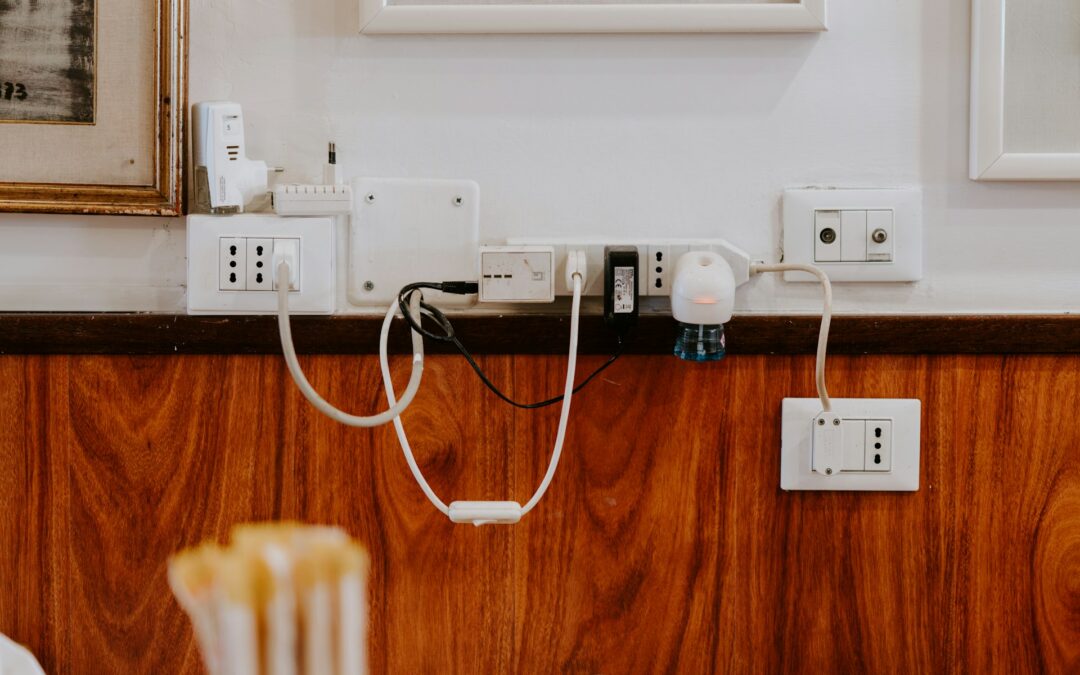Electricity makes our lives easier, powering everything from lights to appliances. However, when circuits become overloaded, they can create serious problems. Electrical overload occurs when too many devices are plugged into a single circuit, drawing more power than the circuit can handle. This can lead to flickering lights, tripped breakers, or even buzzing outlets which may seem harmless but can signal bigger issues.
When ignored, these signs can escalate into dangerous situations. Overloaded circuits can cause fires and damage your appliances, posing threats to both your home and family. Recognising the early warning signs is important for keeping your home safe and preventing unnecessary hazards.
Since most of these issues start small, it’s essential to know what to look out for and how to address any concerns. By understanding the signs of electrical overload and taking proactive steps, you can ensure a safer environment for everyone at home.
Recognising the Signs of Electrical Overload
Identifying the signs of electrical overload early can help prevent serious issues in your home. One of the most common symptoms of an overloaded circuit is frequent tripping of circuit breakers. Circuit breakers are designed to shut off power when they detect an overload, so if they trip often, it’s a clear indication that there might be a problem.
Flickering or dimming lights are also tell-tale signs. If you notice your lights flickering when you turn on an appliance, the circuit might be struggling to provide enough power. Buzzing outlets or switches are another red flag. This buzzing sound often indicates that your electrical system is under stress, which could lead to more serious problems if not addressed.
There are several warning indicators to look out for in your home:
1. Warm outlets or switches: If an outlet or switch feels warm to the touch, it could indicate an overload or faulty wiring.
2. Burn marks or a burning smell: These are serious signs and indicate overheating. You should immediately turn off power to the area and call an electrician.
3. Frequent appliance malfunctions: If electronics or appliances frequently malfunction or turn off unexpectedly, their circuit might be overloaded.
Early detection of these signs can prevent electrical overloads from causing more severe problems. Keeping an eye out for these warning indicators can make a significant difference in maintaining a safe home.
Potential Risks and Dangers of Electrical Overload
Electrical overloads pose several serious risks and potential dangers. One of the most significant dangers is the risk of fire. Overloaded circuits can cause wires to heat up, which may lead to electrical fires. These fires spread quickly and can devastate homes and pose threats to personal safety.
In addition to fires, electrical overloads can damage your home appliances. When a circuit is overloaded, it struggles to supply the necessary power to connected devices. This can lead to damaged appliances, resulting in costly repairs or replacements. Electronics such as TVs, computers, and kitchen appliances are especially at risk.
The safety of your family is also at stake when dealing with electrical overloads. An overloaded circuit increases the risk of electrical shocks, especially if outlets or switches are faulty or exposed. Shocks can cause injury, which underscores the importance of addressing issues promptly.
Here’s how these risks affect your home and family:
– Fire Hazards: Overloading circuit wiring can overheat and ignite, posing a major fire threat.
– Appliance Damage: Insufficient power flow leads to strain on devices, damaging them over time.
– Safety Risks: Faulty, overloaded circuits elevate the chance of electrical shocks.
Understanding these risks helps underline the importance of recognising the signs of an electrical overload early. Preventative measures and regular maintenance are crucial for protecting your home and family from the dangers of electrical overloads.
Common Causes of Electrical Overload
Understanding what causes electrical overload can help you prevent it. A significant contributor is the overuse of extension cords and multi-plug adapters. While these devices offer convenient solutions for powering multiple gadgets, they can lead to overloading if not used cautiously. When too many appliances are plugged into one extension cord, the cord can become stressed, causing it to overheat.
Plugging in too many high-wattage appliances on a single circuit is another common cause. Appliances like microwaves, hair dryers, and space heaters use a lot of energy, which can quickly overload a circuit. When too many of these are connected to the same circuit, it exceeds its capacity, increasing the risk of tripping breakers or causing damage.
Additionally, older homes are more susceptible to electrical overload. Many older homes were built with electrical systems that can’t keep up with modern technology and power needs. As we add more devices and appliances, the risk of overloading these outdated systems grows.
To prevent electrical overload, it’s crucial to be aware of the power demands of your appliances and distribute them evenly across circuits. Regularly assessing and updating your home’s electrical system can significantly reduce these risks.
Effective Ways to Prevent Electrical Overload
Preventing electrical overload involves several proactive steps. First, it’s essential to balance electrical loads by distributing devices across multiple circuits. Avoid plugging too many high-wattage appliances into the same outlet or circuit. Instead, spread them out to reduce stress on any single circuit.
Using appropriate extension cords is another preventive measure. Always choose cords that match the power needs of your devices. A heavy-duty extension cord is suitable for high-wattage appliances, while standard cords are best for less demanding electronics. Additionally, minimise the use of multi-plug adapters as they can lead to unintentional overloading.
Upgrading your electrical system is crucial, especially in older homes. Modern systems are designed to handle greater power demands safely. Consulting professionals at Williamson Electrical Services ensures that upgrades are done correctly and safely. They can assess your current system and recommend necessary improvements.
Here’s a quick list for prevention:
– Distribute devices across multiple circuits
– Use heavy-duty extension cords for high-power devices
– Regularly inspect and upgrade your electrical system
– Consult professionals for expert guidance
By taking these steps, you can significantly reduce the risk of electrical overload and maintain a safer home environment.
Conclusion
Understanding electrical overload and recognising its signs is crucial for the safety and efficiency of your home. By spotting warning indicators and knowing the potential risks, you can take proactive measures to protect your family and property. Awareness of common causes, like overusing extension cords and crowding circuits with high-wattage devices, empowers you to make smart decisions daily.
Preventive actions, such as balancing loads and upgrading outdated systems, significantly reduce overload risks. Consulting with experts at Williamson Electrical Services for upgrades ensures your home’s electrical system meets modern demands safely. Being attentive to signs and causes not only enhances safety but also maximises the lifespan of your appliances, leading to savings over time.
For peace of mind in your home’s electrical safety, consider reaching out to Williamson Electrical Services. Our electricians in New Farm, Brisbane, is ready to ensure your home’s electrical system is both efficient and secure. Make sure your home is protected from electrical overloads—get in touch with us today to schedule a consultation or service.

